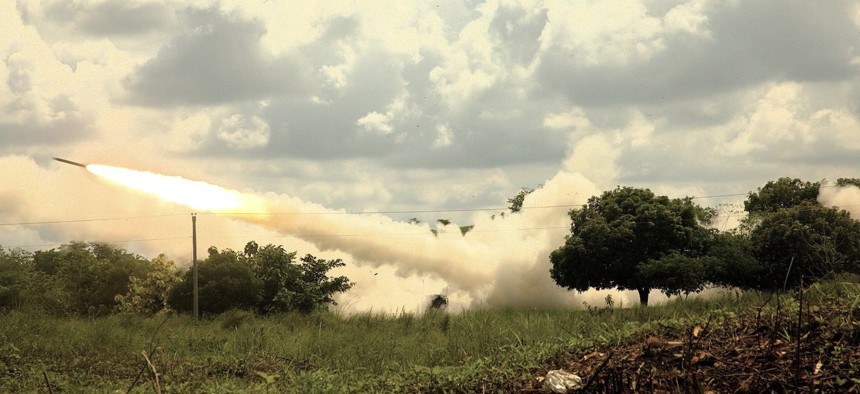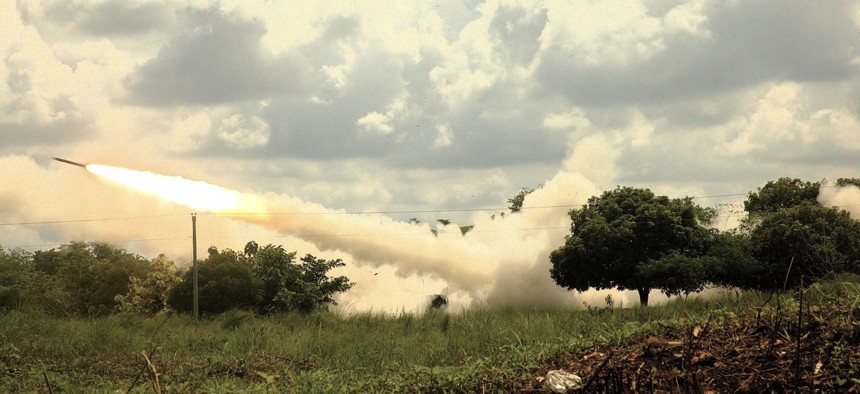
The Army has a gap to close between long-range precision weapons and indirect fires at closer ranges, so they’re looking to attack drones to fill in the mid-range capabilities, the service’s vice chief of staff said Wednesday.
The 25th Infantry Division’s artillery command is testing out a new structure that pairs first-person view attack drones with traditional systems, Gen. James Mingus told an audience during an event at the Center for Strategic and International Studies.
“There’s a belief out there that the singular way in which we approach fires, going back to the validity and use of cannon artillery, you know, is still valid,” he said. “We’re imagining a future where instead of it just being all tube,” there will be a High Mobility Artillery Rocket System battalion, an M777 howitzer battalion, “and then in that third battalion, it’ll be a combination of mortars, 105 mm, launched defects, loitering munitions, first-person drones, that makes up the delta for the longer range and the cannon artillery.”
The Army has been simulating different battlefield scenarios using versions of this configuration, maneuvering as a division or corps, he added.
They’re also simulating how they’ll integrate their forthcoming long-raise precision weapon, Precision Strike Missile, or PrSM.
“That won’t be here for another couple years,” Mingus said, as a replacement to the existing Army Tactical Missile System, with a range of 1000 kilometers compared to the ATACM’s 300.
“Think about the difference there. You know, how does that change the battlefield architecture and the battlefield geometry for our war fighters?” he said. “We can do that today under live conditions without actually having to put that stuff in the field.”
The concern is having enough rounds to feed all of these systems.
“In particular, both production rates and price points associated with some of our critical munitions that are out there for our big frames and our big platforms … and based on what has happened in Israel and Iran and the expenditures that are there, what’s happened in Ukraine. Our magazine depth right now is not where it needs to be.”
That includes missiles for the Patriot air defense system, he said, as well as Tomahawk cruise missiles the Navy fired off during the Red Sea conflict against the Houthis. The military now needs infrastructure to quickly ramp up production.
In a crisis, the Army may need to jump from producing 500 Patriot missiles a year to 10,000, as an example, and it will need to happen in days rather than months.
“We can’t afford to wait that amount of time, and the only way you’re going to do it is through automation and robotics, because a robot doesn’t care whether it’s working 24 hours a day or 12 hours a day, and the human component of this is what always takes the longest amount of time,” he said.
The post Army experiments with integrating attack drones into artillery formations appeared first on Defense One.




